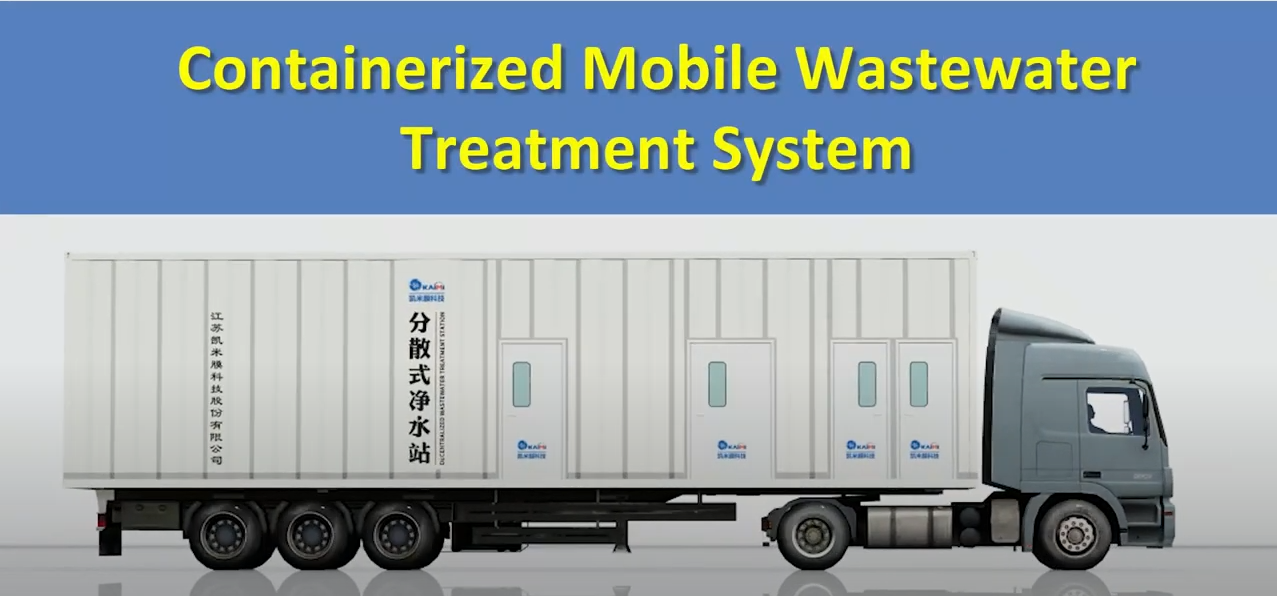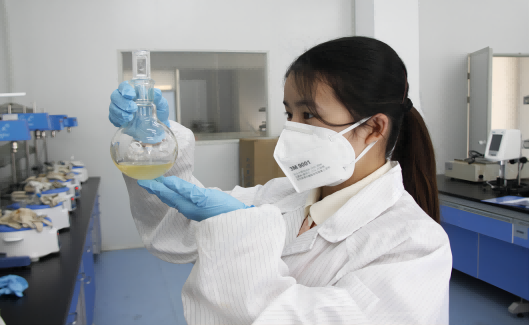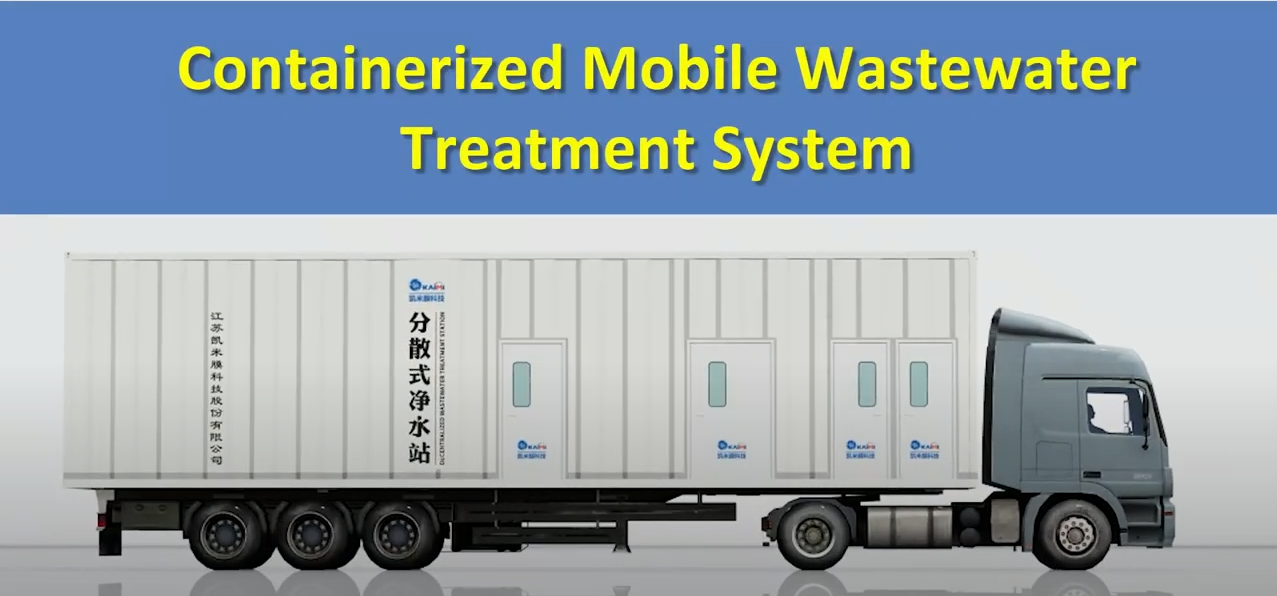The source of hospital wastewater contains a variety of bacteria, viruses, parasitic ovum, which is mainly composed of infectious bacteria wastewater, radioactive wastewater, wastewater with bacteria, and general domestic wastewater. The main pollutants in wastewater are CODcr, BOD5, ammonia nitrogen and bacteria.

The treatment process of hospital wastewater consists of primary treatment such as screen, secondary biochemical treatment and tertiary advanced treatment such as disinfection. The secondary biochemical treatment includes activated sludge method, biological contact oxidation method, etc., while the tertiary advanced treatment generally adopts filtration, coagulation and precipitation, etc. Traditional processing technology has long process and weak control of bacteria, which is easy to cause secondary contamination. In recent years, the membrane bioreactor (MBR) process, which combines the secondary biochemical treatment and tertiary advanced treatment, has achieved good results in the treatment of hospital wastewater. The specific advantages are as follows:
1. Lower suspended matter in the effluent, Less disinfectant consumption, and less disinfection by-product.
The effluent from the traditional hospital wastewater treatment process usually contains a certain concentration of suspended matter, and the suspended floc adsorbed or wrapped bacteria and viruses, forming a protective barrier for bacteria and viruses, which is not easy to be killed by disinfectants, reducing the sterilization efficiency of disinfectants. In addition, the current disinfectants in hospitals are mainly chlorine-containing disinfectants, which are easy to produce organic chlorides during the process of disinfection. After MBR treatment, the concentration of suspended solids in the effluent is low, so that bacteria and viruses lose the protective barrier and are killed, which greatly reduces disinfectant consumption, and the amount of disinfection by-products.
2. Small footprint, high degree of operation automation.
The traditional hospital wastewater treatment process usually has a long process, complicated operation and large footprint, which makes it difficult to realize automatic control. The modular design of MBR has the advantages of small footprint, less structure, compact structure, convenient operation and management, and easy to realize automatic control.
3. Thorough treatment effect of pathogenic microorganisms and the safe treatment effluent.
At present, the commonly used secondary biological treatment process is not ideal for the treatment of some pathogenic microorganisms, which is mainly removed by disinfection process. Blindly increasing the amount of disinfectant will cause high residual chlorine in effluent, which seriously endangers the ecological environment and human health. The membrane component has the characteristics of small pore size of 0.03μm, large specific surface area and strong adsorption capacity, which can effectively intercept pathogenic microorganisms in the reactor.
4. Less sludge discharge, no secondary pollution.
The residual sludge produced by hospital wastewater treatment contains a large number of pathogenic microorganisms, and the sludge discharge is large. The treatment costs of sludge disinfection and incineration are also increased accordingly. Due to the long sludge age and high sludge concentration, the MBR process can achieve no sludge discharge for a long time, and the amount of sludge is less than that of the traditional process, which is conducive to saving the treatment cost of the residual sludge.

The source of hospital wastewater contains a variety of bacteria, viruses, parasitic ovum, which is mainly composed of infectious bacteria wastewater, radioactive wastewater, wastewater with bacteria, and general domestic wastewater. The main pollutants in wastewater are CODcr, BOD5, ammonia nitrogen and bacteria.

The treatment process of hospital wastewater consists of primary treatment such as screen, secondary biochemical treatment and tertiary advanced treatment such as disinfection. The secondary biochemical treatment includes activated sludge method, biological contact oxidation method, etc., while the tertiary advanced treatment generally adopts filtration, coagulation and precipitation, etc. Traditional processing technology has long process and weak control of bacteria, which is easy to cause secondary contamination. In recent years, the membrane bioreactor (MBR) process, which combines the secondary biochemical treatment and tertiary advanced treatment, has achieved good results in the treatment of hospital wastewater. The specific advantages are as follows:
1. Lower suspended matter in the effluent, Less disinfectant consumption, and less disinfection by-product.
The effluent from the traditional hospital wastewater treatment process usually contains a certain concentration of suspended matter, and the suspended floc adsorbed or wrapped bacteria and viruses, forming a protective barrier for bacteria and viruses, which is not easy to be killed by disinfectants, reducing the sterilization efficiency of disinfectants. In addition, the current disinfectants in hospitals are mainly chlorine-containing disinfectants, which are easy to produce organic chlorides during the process of disinfection. After MBR treatment, the concentration of suspended solids in the effluent is low, so that bacteria and viruses lose the protective barrier and are killed, which greatly reduces disinfectant consumption, and the amount of disinfection by-products.
2. Small footprint, high degree of operation automation.
The traditional hospital wastewater treatment process usually has a long process, complicated operation and large footprint, which makes it difficult to realize automatic control. The modular design of MBR has the advantages of small footprint, less structure, compact structure, convenient operation and management, and easy to realize automatic control.
3. Thorough treatment effect of pathogenic microorganisms and the safe treatment effluent.
At present, the commonly used secondary biological treatment process is not ideal for the treatment of some pathogenic microorganisms, which is mainly removed by disinfection process. Blindly increasing the amount of disinfectant will cause high residual chlorine in effluent, which seriously endangers the ecological environment and human health. The membrane component has the characteristics of small pore size of 0.03μm, large specific surface area and strong adsorption capacity, which can effectively intercept pathogenic microorganisms in the reactor.
4. Small sludge discharge, no secondary pollution.
The residual sludge produced by hospital wastewater treatment contains a large number of pathogenic microorganisms, and the sludge discharge is large. The treatment costs of sludge disinfection and incineration are also increased accordingly. Due to the long sludge age and high sludge concentration, the MBR process can achieve no sludge discharge for a long time, and the amount of sludge is less than that of the traditional process, which is conducive to saving the treatment cost of the residual sludge.
